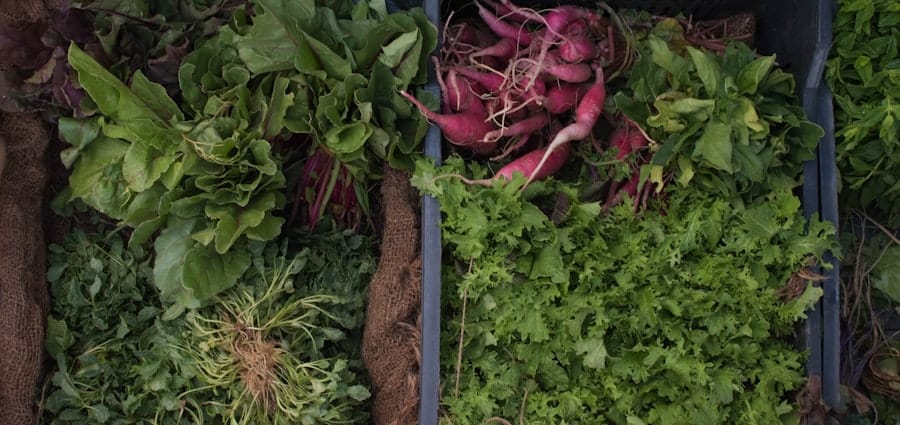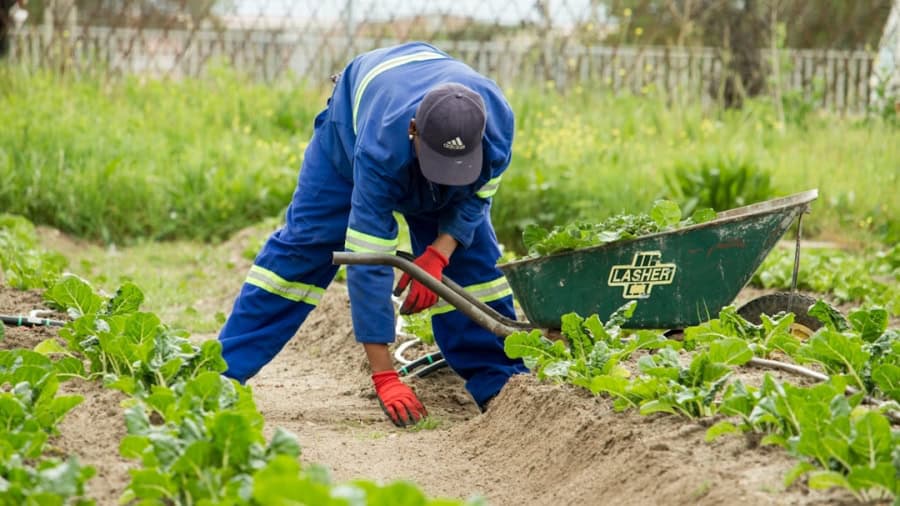In recent years, vertical farming has emerged as a revolutionary approach to agriculture, capturing the attention of urban planners, environmentalists, and food enthusiasts alike. This innovative method involves growing crops in vertically stacked layers, often integrated into structures such as skyscrapers or repurposed warehouses. The concept is not entirely new; it has roots in hydroponics and aeroponics, techniques that have been utilized for decades.
However, the increasing pressures of urbanization, climate change, and a growing global population have propelled vertical farming into the spotlight. As cities expand and arable land diminishes, the need for efficient food production systems that can thrive in urban environments has never been more pressing. This has led to a surge in investment and research into vertical farming technologies, making it a focal point in discussions about the future of food.
The rise of vertical farming is also closely tied to advancements in technology and a growing awareness of the environmental impacts of traditional agriculture. With the global population projected to reach nearly 10 billion by 2050, the demand for food is expected to increase dramatically. Conventional farming methods, which often rely on extensive land use and significant water resources, are becoming increasingly unsustainable.
Vertical farming offers a solution by utilizing controlled environments that can produce food year-round, independent of weather conditions. This method not only maximizes space but also minimizes the carbon footprint associated with transporting food from rural farms to urban centers. As cities grapple with the challenges of food supply and sustainability, vertical farming stands out as a beacon of hope, promising to reshape our agricultural landscape.
Key Takeaways
- Vertical farming is on the rise as a sustainable and innovative method of agriculture, especially in urban areas with limited space.
- Advantages of vertical farming include higher crop yields, reduced water usage, and the ability to grow crops year-round regardless of weather conditions.
- Challenges and limitations of vertical farming include high initial investment costs, energy consumption, and the need for efficient automation and monitoring systems.
- Technology and innovation in vertical farming are driving advancements in areas such as LED lighting, hydroponic and aeroponic systems, and data-driven crop management.
- Vertical farming contributes to sustainability by reducing food miles, minimizing pesticide use, and utilizing unused urban spaces for food production.
Advantages of Vertical Farming
One of the most compelling advantages of vertical farming is its ability to produce food in urban areas, significantly reducing the distance between farm and table. This proximity not only enhances the freshness of produce but also diminishes transportation costs and emissions associated with long-distance food transport. By situating farms within city limits, vertical farming can provide fresh fruits and vegetables to urban populations, addressing issues of food deserts where access to healthy food options is limited.
Furthermore, the controlled environments of vertical farms allow for year-round cultivation, ensuring a consistent supply of produce regardless of seasonal changes. This reliability can help stabilize food prices and availability in urban markets, making fresh produce more accessible to all. Another significant advantage lies in the resource efficiency of vertical farming systems.
Traditional agriculture often requires vast amounts of water, land, and pesticides, leading to environmental degradation and resource depletion. In contrast, vertical farms utilize advanced technologies such as hydroponics and aeroponics, which can reduce water usage by up to 90% compared to conventional farming methods. Additionally, these systems can be designed to recycle water and nutrients, further enhancing their sustainability.
The use of artificial lighting and climate control systems allows for optimal growing conditions that can lead to higher yields per square foot than traditional farming. This efficiency not only maximizes productivity but also minimizes waste, making vertical farming an attractive option for addressing the challenges posed by climate change and resource scarcity.
Challenges and Limitations

Despite its many advantages, vertical farming is not without its challenges and limitations. One of the primary concerns is the high initial capital investment required to establish these systems. The technology involved in creating controlled environments—such as LED lighting, climate control systems, and hydroponic setups—can be prohibitively expensive for many potential farmers.
This financial barrier can limit the widespread adoption of vertical farming practices, particularly in regions where traditional agriculture has been the norm for generations. Additionally, while operational costs may decrease over time due to efficiencies gained through technology, the initial outlay can deter investors and entrepreneurs from entering this burgeoning field. Another significant challenge is the reliance on technology and energy sources that may not always be sustainable.
While vertical farms can reduce water usage and land requirements, they often depend heavily on electricity for lighting and climate control. In regions where energy is derived from fossil fuels, this reliance can negate some of the environmental benefits associated with vertical farming. Moreover, the complexity of managing these systems requires skilled labor and expertise that may not be readily available in all areas.
As a result, there is a risk that vertical farming could exacerbate existing inequalities in access to food production technologies rather than democratizing them. Addressing these challenges will be crucial for the long-term viability and acceptance of vertical farming as a mainstream agricultural practice.
Technology and Innovation in Vertical Farming
The technological advancements driving vertical farming are nothing short of remarkable, encompassing a range of innovations that enhance efficiency and productivity. One key area of development is in lighting technology; LED lights have revolutionized how crops are grown indoors by providing specific wavelengths that optimize photosynthesis while consuming less energy than traditional lighting systems. These lights can be programmed to mimic natural sunlight cycles, allowing for tailored growth conditions that can significantly increase crop yields.
Additionally, automation technologies such as robotics and artificial intelligence are being integrated into vertical farms to streamline operations—from planting and harvesting to monitoring plant health—further reducing labor costs and increasing efficiency. Moreover, innovations in data analytics are playing a pivotal role in optimizing vertical farming practices. By employing sensors and IoT (Internet of Things) devices, farmers can collect real-time data on environmental conditions such as temperature, humidity, and nutrient levels.
This data can then be analyzed to make informed decisions about crop management, leading to improved growth rates and reduced waste. Furthermore, advancements in genetic engineering are enabling the development of crop varieties specifically suited for vertical farming environments. These innovations not only enhance productivity but also contribute to the resilience of crops against pests and diseases, ensuring a more stable food supply in an increasingly unpredictable climate.
Vertical Farming and Sustainability
Sustainability is at the heart of the vertical farming movement, offering a potential solution to some of the most pressing environmental challenges facing our planet today. Traditional agriculture is often associated with deforestation, soil degradation, and excessive water use; however, vertical farming presents an opportunity to mitigate these impacts significantly. By utilizing controlled environments that require minimal land and water resources, vertical farms can produce food with a much lower ecological footprint.
The ability to grow crops vertically means that less land is needed for cultivation, allowing natural ecosystems to thrive rather than being converted into farmland. Additionally, vertical farms can contribute to urban sustainability by reducing food waste associated with transportation and storage. With produce grown closer to consumers, there is less time spent in transit, which translates into fresher food that lasts longer on grocery shelves.
Furthermore, many vertical farms are designed with sustainability in mind; they often incorporate renewable energy sources such as solar panels or wind turbines to power their operations. By harnessing these clean energy sources, vertical farms can operate with minimal reliance on fossil fuels, further enhancing their sustainability credentials. As cities continue to grow and grapple with environmental challenges, vertical farming offers a promising pathway toward more sustainable urban food systems.
Vertical Farming and Food Security

Addressing Global Food Security Concerns
Food security is a pressing issue worldwide, particularly as climate change threatens traditional agricultural practices. Vertical farming has emerged as a viable solution to enhance food security by providing a reliable source of fresh produce in urban areas where access may be limited. By growing food locally within cities, vertical farms can help alleviate some of the pressures associated with global supply chains that are vulnerable to disruptions caused by natural disasters or geopolitical tensions.
Empowering Communities and Improving Nutrition
This localized approach not only ensures a steady supply of fresh fruits and vegetables but also empowers communities to take control of their food sources. Moreover, vertical farming can play a crucial role in addressing nutritional deficiencies prevalent in many urban populations. By producing a diverse array of crops year-round—regardless of seasonal constraints—vertical farms can provide essential nutrients that may be lacking in diets dominated by processed foods.
Supporting Local Economies and Health Outcomes
This increased access to fresh produce can lead to improved health outcomes for urban residents while simultaneously supporting local economies through job creation in agriculture-related sectors. As cities continue to expand and face challenges related to food access and nutrition, vertical farming stands out as a promising strategy for enhancing food security on both local and global scales.
The Future of Agriculture: Vertical Farming’s Global Impact
As we look toward the future of agriculture, it is clear that vertical farming has the potential to reshape our global food systems significantly. With its ability to produce food sustainably in urban environments while minimizing resource use and environmental impact, vertical farming represents a paradigm shift in how we think about agriculture. As technology continues to advance and more entrepreneurs enter this space, we may see an increase in innovative models that combine vertical farming with other sustainable practices such as permaculture or agroecology.
This integration could lead to even greater efficiencies and resilience within our food systems. Furthermore, the global impact of vertical farming extends beyond just food production; it has implications for economic development, social equity, and environmental stewardship. By creating jobs in urban areas where employment opportunities may be scarce, vertical farms can contribute to local economies while fostering community engagement around food production.
Additionally, as awareness grows about the importance of sustainable practices in agriculture, consumers may increasingly support local vertical farms over conventional agricultural products—further driving demand for this innovative approach. Ultimately, as we navigate the complexities of feeding a growing population amid environmental challenges, vertical farming may emerge as a cornerstone of a more sustainable and equitable global food system.
If you’re interested in innovative technologies that are shaping the future, you might find the article “The Best Tablets for Students in 2023” intriguing. It explores the latest advancements in tablet technology, which are essential tools for modern education and can be quite complementary to learning about new agricultural technologies like vertical farming. To read more about how these tablets are enhancing the learning experience and keeping students connected in an increasingly digital world, check out the article here.
FAQs
What is vertical farming?
Vertical farming is the practice of growing crops in vertically stacked layers. It often incorporates controlled-environment agriculture, which aims to optimize plant growth, using indoor farming techniques such as hydroponics, aquaponics, and aeroponics.
How does vertical farming work?
Vertical farming works by utilizing controlled environments to grow crops in vertically stacked layers. This can be achieved using hydroponic or aeroponic systems, which provide plants with the necessary nutrients and water without soil. Additionally, vertical farming often incorporates artificial lighting and climate control to optimize plant growth.
What are the benefits of vertical farming?
Vertical farming offers several benefits, including increased crop yields, reduced water usage, and the ability to grow crops in urban areas. It also minimizes the need for pesticides and herbicides, and can potentially reduce the environmental impact of traditional agriculture.
How will vertical farming feed the world in the future?
Vertical farming has the potential to significantly increase the efficiency and productivity of agriculture, allowing for more food to be grown in a smaller footprint. This could help to address food security issues, particularly in urban areas where access to fresh produce is limited.
What are the challenges of vertical farming?
Challenges of vertical farming include high initial investment costs, energy consumption for artificial lighting and climate control, and the need for specialized knowledge and technology. Additionally, there are still limitations in the types of crops that can be effectively grown using vertical farming techniques.

